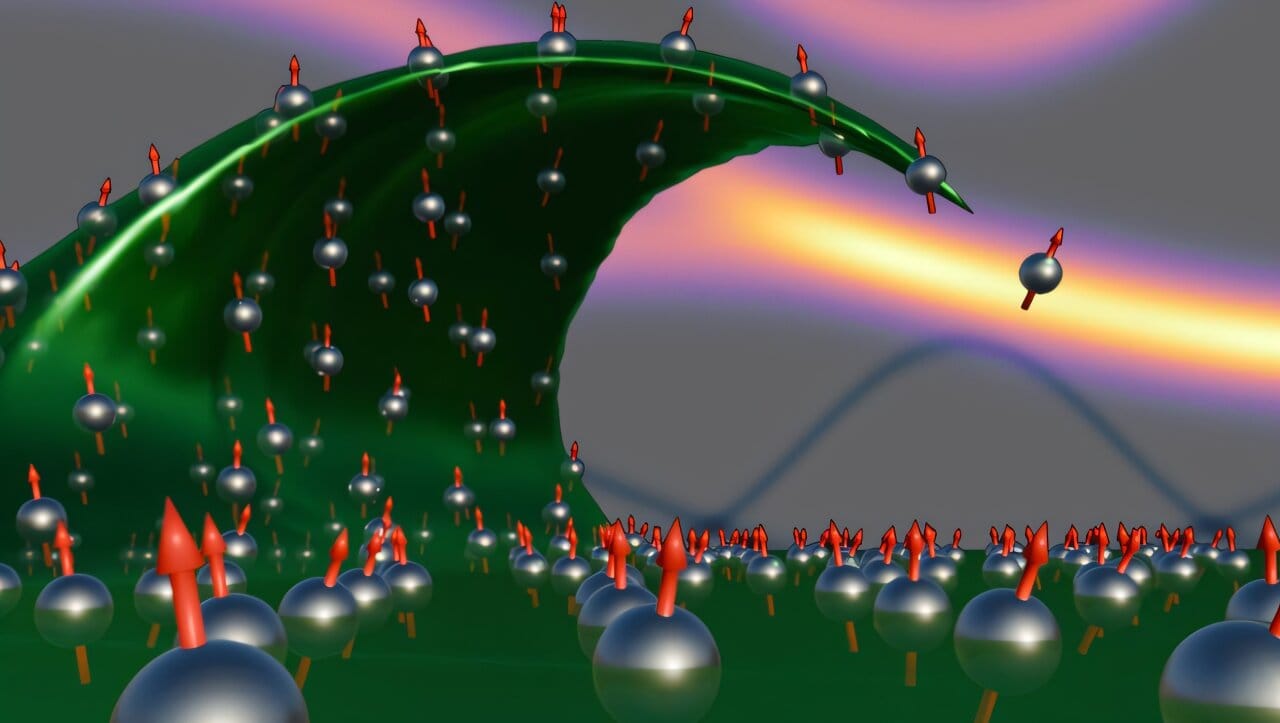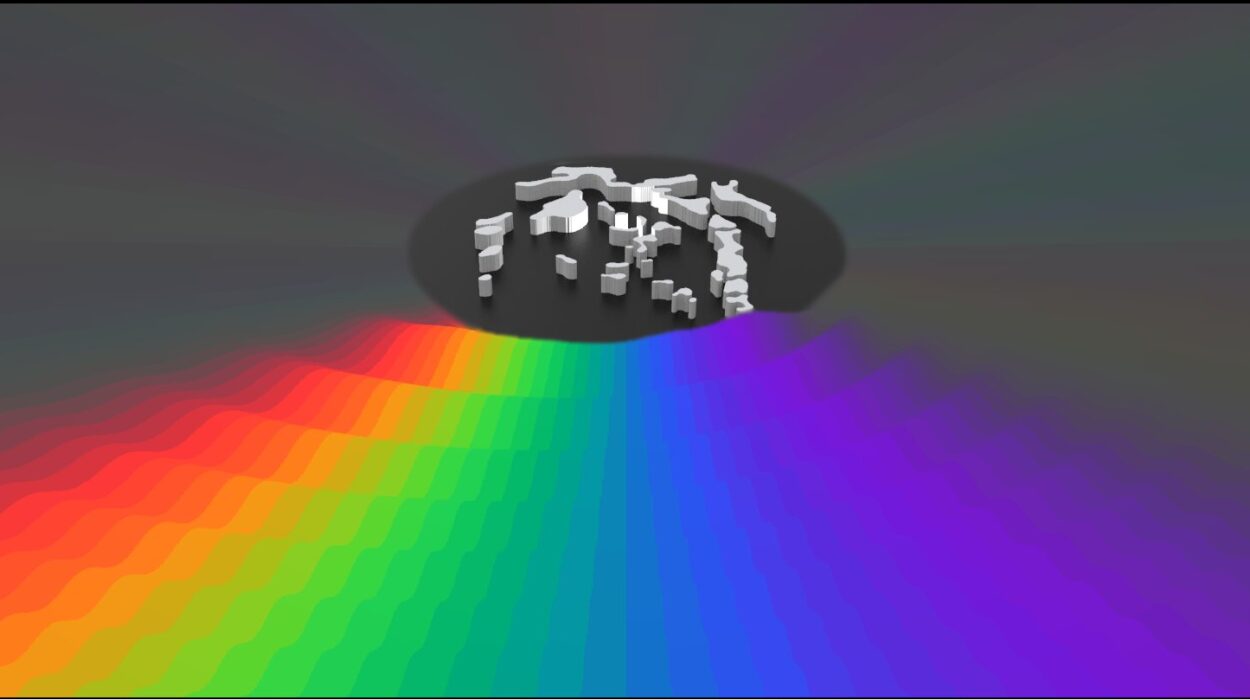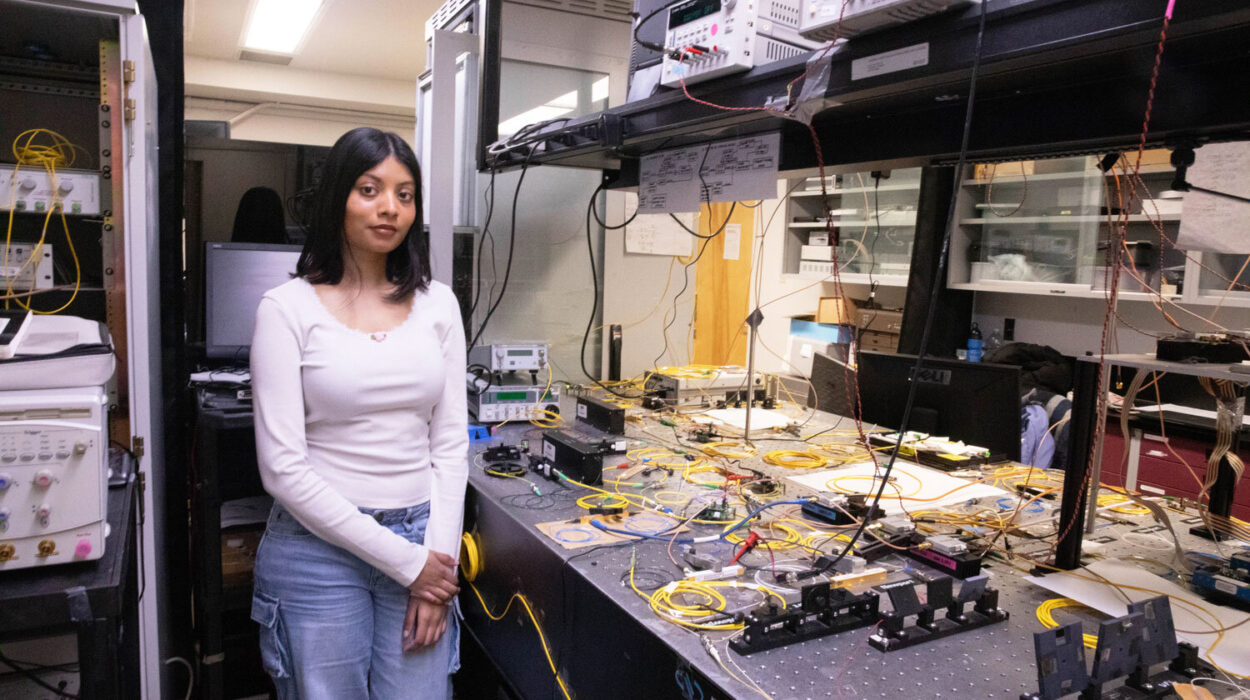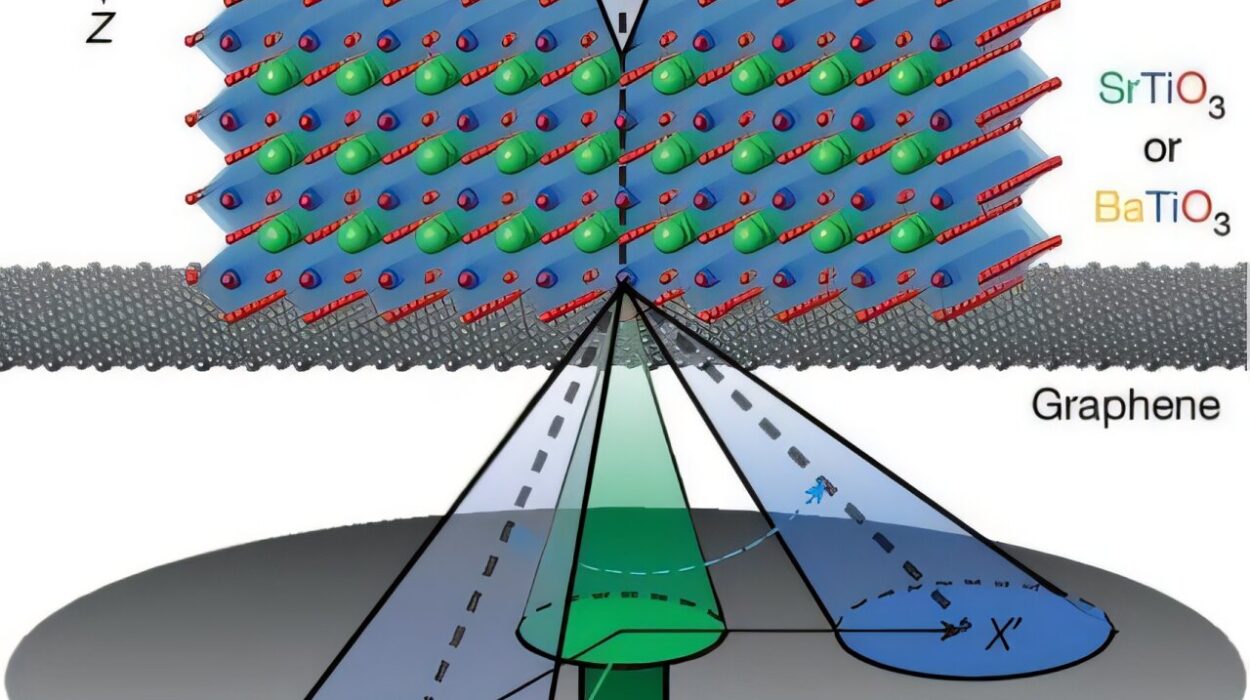For decades, scientists have chased the whispers of a hidden symphony unfolding in the heart of magnetic materials—a choreography of atomic spins that ripple through matter in waves too small, too subtle, to capture directly. These spin waves, called magnons, have long been theorized, simulated, and glimpsed in incomplete forms. But no one had ever truly seen their full performance at the nanoscale.
Until now.
In a pioneering study published in Nature, researchers from Uppsala University, together with international collaborators, have done what no one else has: they have directly observed magnons in motion at the nanoscale. The moment was not just a technical breakthrough—it was the scientific equivalent of unlocking a new sense, one that could let us see the invisible dance of magnetism at the smallest scale.
“We could suddenly see all the magnons and every step of their dance at the nanoscale,” said José Ángel Castellanos-Reyes, co-first author of the study and researcher at Uppsala University. “It was like getting front-row seats to a performance no one had ever seen in full.”
The Spin That Powers a Magnetic World
To understand the gravity of this achievement, we need to descend into the atomic world, where every atom of a magnetic material—like iron or nickel—carries a tiny built-in magnet called a spin. These spins don’t exist in isolation. In magnetic materials, they interact, align, and move together like dancers in a tightly choreographed routine.
When one spin is nudged, it causes a ripple through its neighbors, a collective undulation of spin orientations that propagates through the material. These waves of synchronized spin motion are the magnons. And though they carry no electric charge, they carry something far more subtle: information. They represent an entirely different way of transmitting signals—one that doesn’t rely on moving electrons, but on orchestrating their quantum properties.
This is the promise of magnonics—a revolutionary field that envisions using spin waves to replace or complement charge-based electronics. The potential is immense: faster computing, reduced heat loss, more compact devices, and fundamentally new ways of processing data. But to engineer magnonic devices, you first have to see the magnons. That’s the part that, until now, was nearly impossible.
The Challenge of Observing Ghosts
Why has it taken so long to see magnons at the nanoscale? The answer lies in their elusiveness.
Magnons are quantum mechanical entities—tiny, fleeting, and faint. Existing microscopy tools were either too crude to capture them or too coarse in resolution. While surface magnons have been detected, those that live and ripple deep inside a material remained inaccessible. It’s as if scientists were watching waves in the ocean by staring only at the shore.
Moreover, imperfections in materials—missing atoms, impurities, or structural defects—can dramatically alter magnon behavior. Without being able to see magnons in full, the impact of these real-world variables remained theoretical, limiting the design of reliable magnonic systems.
That’s what makes this new work so groundbreaking. It’s not just that magnons were observed—it’s that they were seen in context, within real materials, under conditions that mimic how they would behave in devices.
A New Microscope, A New Window
The heart of the breakthrough lies in a tool and a theory that came together in perfect harmony.
The experiments were conducted at the SuperSTEM Laboratory in the United Kingdom, where one of the world’s most advanced scanning transmission electron microscopes (STEM) resides. This microscope isn’t just powerful—it’s precise. It can measure energy changes as small as 7 milli-electronvolts (meV), one of the few in the world capable of resolving the faint energy signature left behind by a passing magnon.
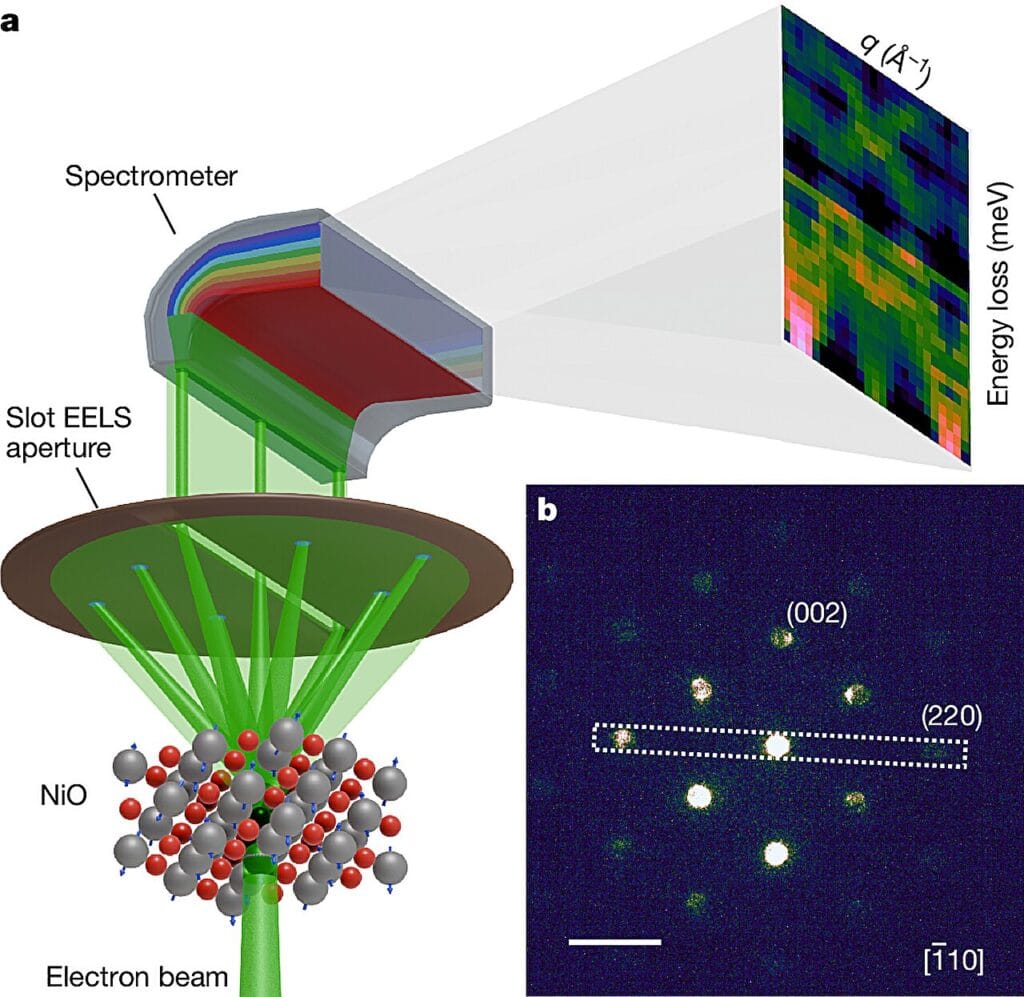
Here’s how it works: a focused beam of electrons is fired through a nanocrystal sample. As the electrons interact with the material, they lose tiny amounts of energy. By measuring these losses, scientists can infer what kind of excitations occurred inside the material—phonons (vibrations), plasmons (electron density waves), or, in this case, magnons.
But the experimental data alone would have been impossible to interpret without a new theoretical framework.
Enter TACAW—Time Autocorrelation of Auxiliary Wavefunctions—a theoretical model developed at Uppsala University by Castellanos-Reyes, Paul Zeiger, and Ján Rusz. This method allowed the team to simulate how magnons would interact with high-energy electrons in the experiment, predicting exactly where and how to look for the signature of magnons in the resulting energy loss data.
And the prediction held true.
“We predicted to find a magnon signal at an energy of around 100 meV in the nickel oxide nanocrystal,” said Rusz, a professor at Uppsala University. “The experiment confirmed it. That moment of convergence between theory and reality—it was deeply rewarding.”
A Digital Twin for Magnetism
To support their findings, the team also relied on a powerful computational tool known as UppASD, an open-source software platform developed at Uppsala for simulating atomistic spin dynamics. UppASD has long been used to simulate magnetic behavior at the atomic level, but this is the first time it was used to guide an experiment of this nature.
UppASD allowed the researchers to digitally reconstruct the behavior of spins in nickel oxide, the material used in the experiment. By comparing simulated magnons to the observed signals, they could confirm not only that they had seen magnons, but that they understood their dynamics.
“UppASD has always been a strong tool for spin simulations,” said Associate Professor Anders Bergman, one of its developers. “But seeing it play a pivotal role in a real experiment like this—where magnons are directly observed—gives it a new level of relevance.”
The fusion of TACAW, UppASD, and the SuperSTEM microscope formed a trifecta of innovation that unlocked the once-invisible world of magnons.
Ripples into the Future
What does it mean to see magnons at the nanoscale?
It means that engineers can begin to design next-generation computing components with unprecedented accuracy. It means we can finally understand how microscopic defects or boundaries affect spin waves—crucial knowledge for building stable, efficient magnonic circuits.
It also opens the door to quantum magnonics, an emerging field where magnons are used as carriers of quantum information, enabling new types of quantum logic gates and hybrid devices that integrate spin, light, and superconductivity.
“This is a milestone in magnonics and microscopy,” Castellanos-Reyes said. “It changes how we understand magnetic materials and gives us new tools to manipulate them.”
Perhaps even more profoundly, this work exemplifies what happens when theory and experiment evolve together—not as separate disciplines, but as intertwined strands of discovery. It was only through predictive modeling, creative theoretical work, and one of the most advanced microscopes in the world that this hidden dance became visible.
The Elegance of the Unseen
Magnons are not just physical phenomena. They are expressions of coherence—waves of unity in a chaotic atomic world. They ripple not through empty space, but through order and alignment. Observing them at the nanoscale is like catching a glimpse of music itself, performed not with instruments, but with atoms in motion.
Until now, we had only heard faint echoes of this music. Now, we can see the choreography.
The implications are practical, yes—but they are also poetic. For the first time, humanity has pulled back the veil and watched the magnetic heartbeat of matter itself. The dancers were always there. Now, at last, we can watch them move.
Reference: Demie Kepaptsoglou et al, Magnon spectroscopy in the electron microscope, Nature (2025). DOI: 10.1038/s41586-025-09318-y
